The art of filmmaking is certainly a technical one. A lot can go into a single frame or a single sequence. Behind a talented director is an equally talented team that is willing to push boundaries in order to bring their creative vision to life. Of course, there are other factors to consider, such as finding the right actors, financing, and scheduling everything so that production runs smoothly. Needless to say, it takes more than a village to create a movie.
On this list, we’ll give credit to some of the industry’s greatest masterpieces that have left its mark on every moviegoer’s collective consciousness.
MULHOLLAND DRIVE – DAVID LYNCH, 2001
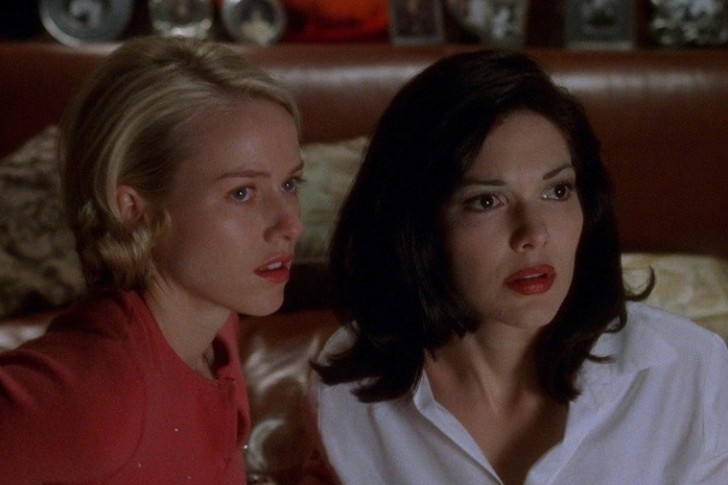
Filmmaker David Lynch has built a reputation for himself as one of the masters of surrealism in films. Among his greatest work? The neo-noir mystery, Mulholland Drive. It stars Naomi Watts and Laura Elena Harring in a revealing look at how our greatest dreams can also become the cause of our miseries.
People watching it for the first time might find it a degree confusing. After all, we are watching someone’s subconscious unfold and everything that’s happening follows dream logic. Aside from the story, there’s plenty of memorable scenes that’ll keep your eyes on the screen—even when you want to turn away.
ETERNAL SUNSHINE OF THE SPOTLESS MIND – MICHEL GONDRY, 2004

So, what do you get when you mix science-fiction and romantic drama in one colorful dream-like film? You get Michel Gondry’s Eternal Sunshine of the Spotless Mind. Starring Jim Carrey and Kate Winslet, it is considered by many to be one of greatest romance films of all time, with much credit to Charlie Kaufman’s prowess for whimsical, yet firmly rooted in reality, storytelling.
In the film, we find Clementine and Joel after their initial romance begins to crumble. She, quite literally, wipes any memory of him from her mind and he does the same but has a last-minute change of heart.
SHAUN OF THE DEAD – EDGAR WRIGHT, 2004
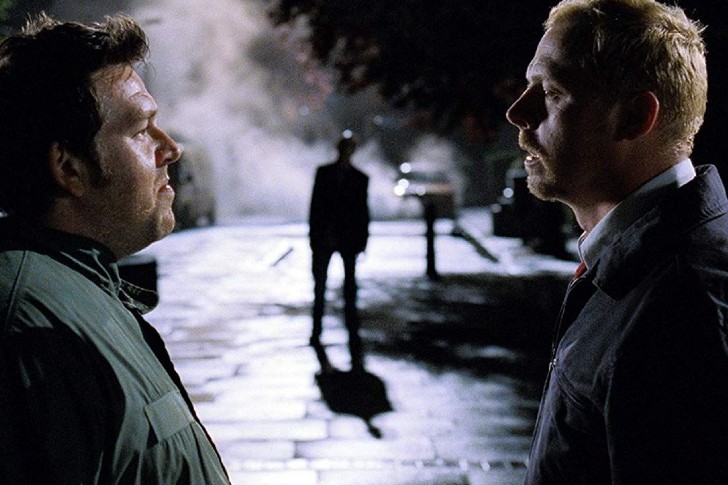
Ask most people about the best zombie film and they will likely point to Night of the Living Dead or Edgar Wright’s 2004 blockbuster, Shaun of The Dead. The director’s take on the genre is a surprising one; a mind-bending mix of comedy, thrills, and even drama. With so much to work with, the film could have easily ended up a campy mess, so we have to give credit to its main stars Nick Frost and Simon Pegg as well for pulling it off!
From the music to all the little stories happening amidst the zombie apocalypse, it’s a movie with plenty of heart.
THE GRAND BUDAPEST HOTEL – WES ANDERSON, 2014
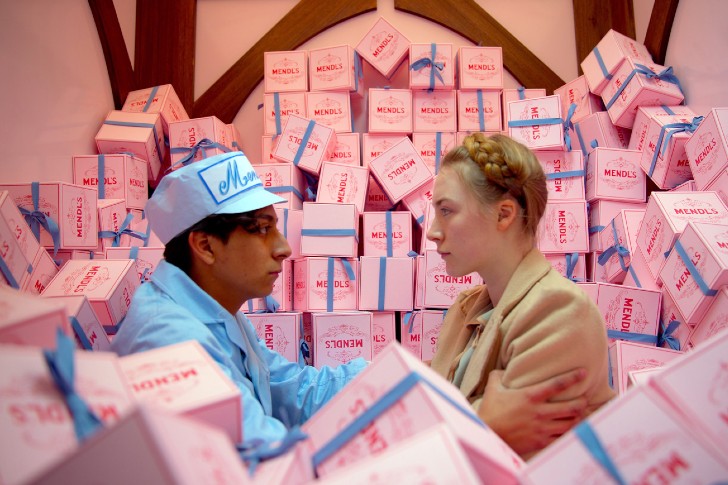
When it comes to directors with a very distinct point of view and style, Wes Anderson is one of the most recognizable. His movies all deserve a spot on our list, but we’ll focus on the wild adventure that is The Grand Budapest Hotel. This film marked the first time Wes was nominated for a directing Oscar and is also one of his highest-grossing when it comes to the box-office.
Best known for the degree of thoughtfulness he gives his movies, The Grand Budapest Hotel delivers everything from some of the quirkiest characters of Wes’ career to the postcard-perfect shots he is loved for.
CREED – RYAN COOGLER, 2015
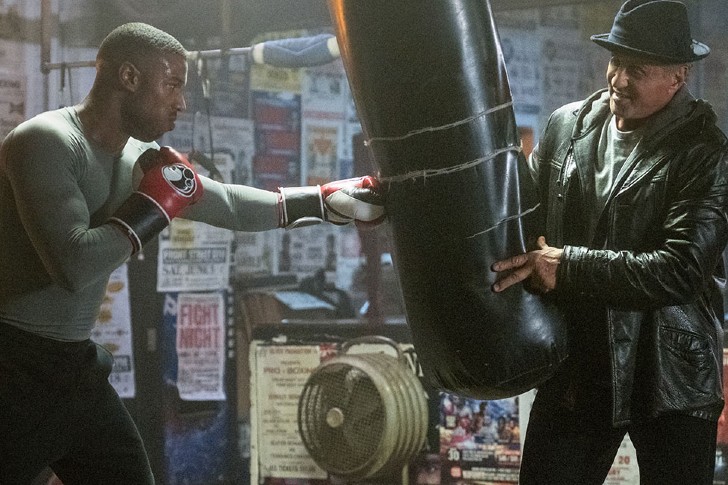
The Rocky film series remains one of the most iconic, so it isn’t too surprising for it to spawn various sequels and spin-offs. The latest addition? Ryan Coogler’s Creed, which was released back in 2015. The sports drama stars Michael B. Jordan of Black Panther fame, alongside the legendary Rocky Balboa portrayed by Sylvester Stallone. Don’t expect this film to follow the same blueprint as the original Rocky films, however!
Coogler injected to the familiar, including giving the franchise’s signature running montage a whole new twist. To his credit, the director gave fans, both new and old, something to love in Creed.
MAD MAX: FURY ROAD – GEORGE MILLER, 2015
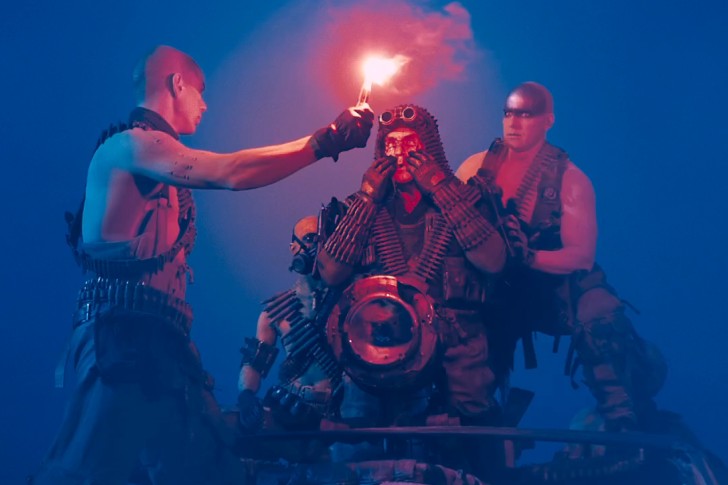
Action films sometimes get flack for skimping on plotlines in order to deliver more kicks and punches. However, this particular genre can be a treasure trove for cinematic gold. When done right, action films not only deliver thrills but can touch emotions as well. If you’re looking for a good example, check out George Miller’s Mad Max: Fury Road—seamlessly blending storytelling, world-building, and action in one sleek package.
The film’s pièce de résistance, a car chase sequence across sand dunes, took over 150 stunt actors to film. Ninety percent of the movie’s stunts are real, too, with much credit to stunt coordinator Guy Norris.
MANCHESTER BY THE SEA – KENNETH LONERGAN, 2016
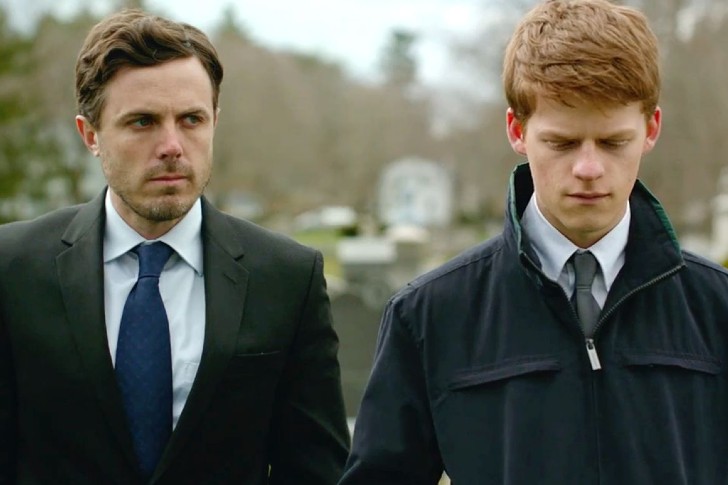
From flashy action-packed scenes to films that work with subtlety in order to deliver emotional punches. When it comes to stories about loss and the degree of pain that follows, Manchester by The Sea delivers a most realistic look at how everyday humans do their best to cope. Casey Affleck’s performance in his role won him an Oscar, as did Kenneth for Best Original Screenplay. You’ll find yourself hanging on to every word and glued to the screen, even when it’s uncomfortable.
Despite the heaviness throughout the film, audiences will still find moments of levity—though brief. The ending, however, remains devastating for many.
SILENCE – MARTIN SCORSESE, 2016
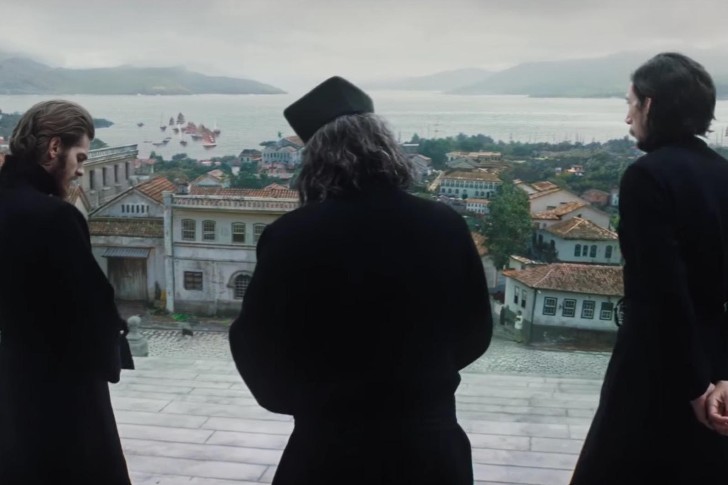
Spirituality is a subject that is often tackled in movies and it isn’t exclusive to one genre alone. Martin Scorsese, who has received much credit and accolades for his mafia films, tackled this in his 2016 release Silence. The movie focused on one man’s struggles with faith, following his feelings of being forsaken by the God he has devoted his life to.
Silence follows the story of Jesuit priests who traveled to Edo-era Japan, seeking out their missing mentor, where suppression of Christianity was rampant. Set against Japan’s beautiful scenery, this story of faith and the cruelty it can inspire is certainly unforgettable.
THE WITCH (THE VVITCH) – ROBERT EGGERS, 2016
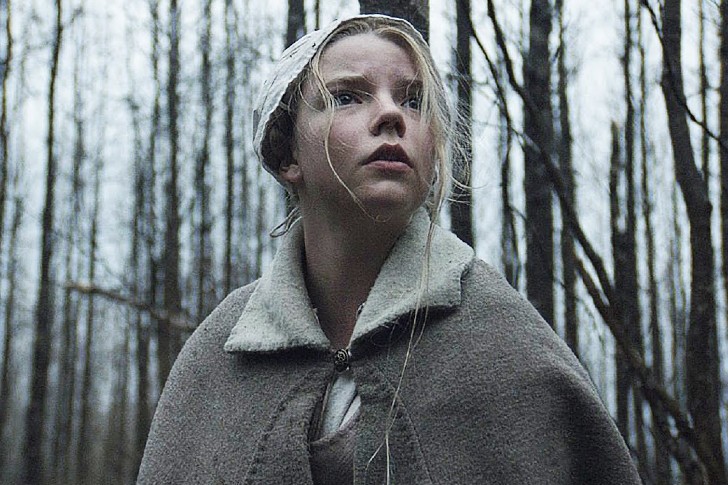
What makes a horror movie effective? When it comes to Robert Eggers’ The Witch, the film relies on good old fashioned storytelling and atmosphere to weave together its dark tale. This is the director’s first movie, but you wouldn’t be able to tell that in the masterful way every scene is shot, further adding to the suspense.
Four years of time investments went into studying the Puritan lifestyle the movie is set in. The crew event went digging into firsthand accounts of demonic possession, going as far as borrowing dialogues from those encounters. This keen attention to detail helped make The Witch a classic.
GET OUT – JORDAN PEELE, 2017
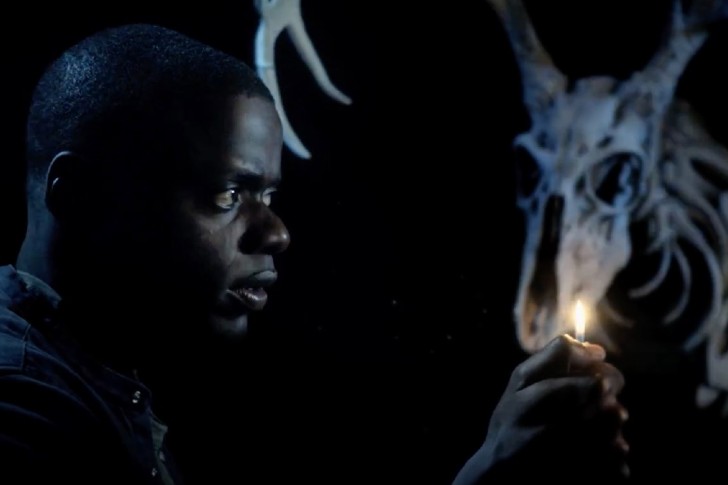
This is one film that’s difficult to Get Out of your head after viewing. Though fictional, it is a timely tale that reflects the everyday horrors that African-American people experience. Aside from its story, the solid performance delivered by Daniel Kaluuya really pulls everything together. From the moment our protagonist shows up at his girlfriend’s family estate, you won’t be able to ignore that brewing feeling deep in your gut: something is very, very wrong.
And that small degree of discomfort eventually bubbles over, leading to one of the greatest horror movie endings in film. We won’t spoil it for you, though!
JAWS – STEVEN SPIELBERG, 1975
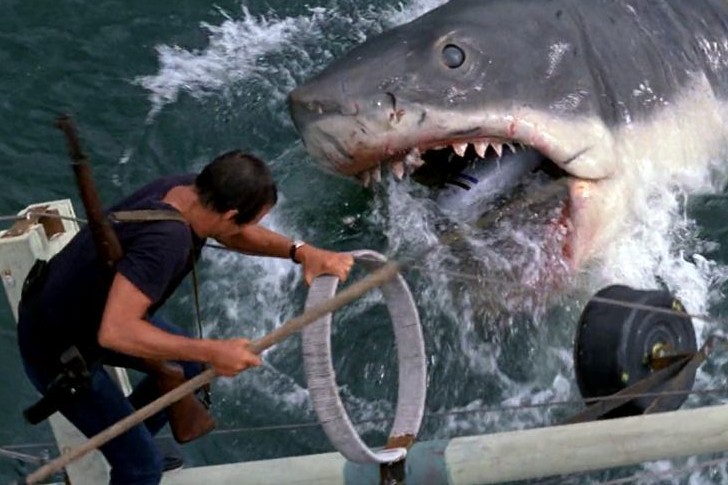
Monster flicks are a dime a dozen, especially those of the “killer shark” variety. We’ve seen the worst variations, so let’s filter through those and dive into the granddaddy of it all. Steven Spielberg’s Jaws is, arguably, the film that sets the tone for all else to follow. It made an entire generation of beachgoers think twice before getting in the water. Of course, credit also goes to Verna Field’s masterful editing—ramping up the thrill factor with even the most subtle of scares.
The film proved how effective practical effects can be in the hands of a master. A small investment with big returns!
EVIL DEAD II – SAM RAIMI, 1987
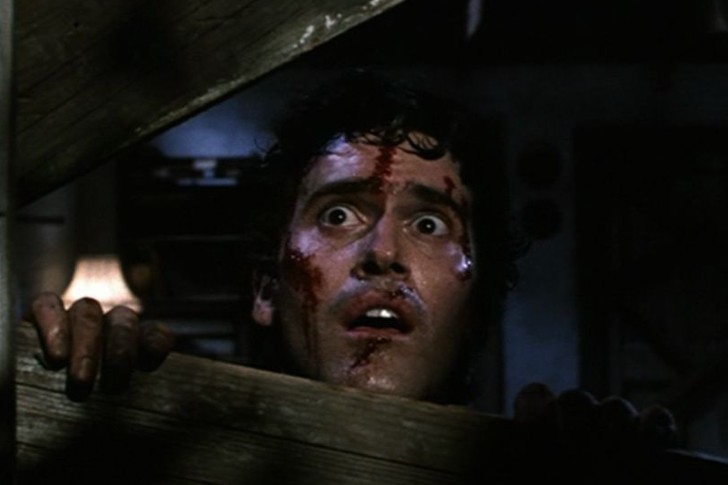
What turns the average into a classic? Some might say it’s the emotional storyline, perhaps the stunning effects used, or an ensemble cast of award-winning actors that make everything work. However, this isn’t always the case. Sam Raimi’s Evil Dead II borders on camp, but that’s the very thing that makes it so good. It achieves its goal impressively: scare audiences, but make them laugh at the same time.
Don’t get us wrong, though. The practical effects certainly could use a degree of work, but they serve their purpose well. Can anyone really forget the scene with the blood geyser? No, we didn’t think so.
UNFORGIVEN – CLINT EASTWOOD, 1992
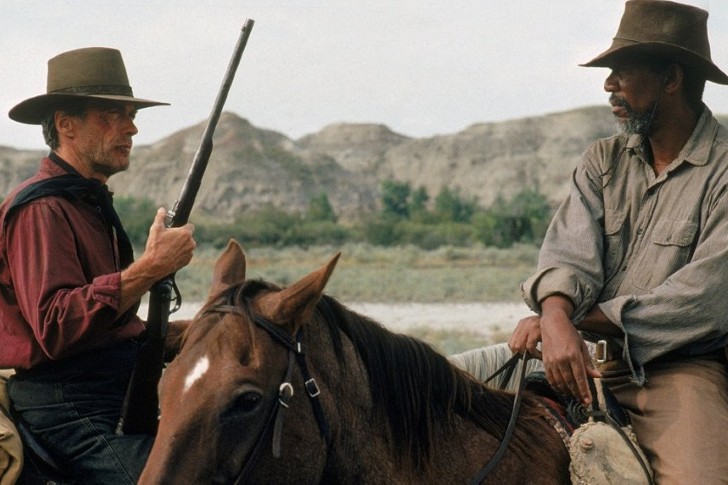
Some say you can’t teach an old dog new tricks, but when it comes to Western films, trust Clint Eastwood to put his own spin on things. No online classes needed! He keeps the genre fresh and takes old tropes in new, often unexpected directions. Such is the case with the actor and filmmaker’s 1992 release, Unforgiven.
The film revises the idea of heroes and villains, where even those who uphold the law become no better than the ones the criminals they chase after. The violence in it is brutal, but the cinematography is simply breathtaking providing moments of levity in an otherwise dark landscape.
SPIDER-MAN 2 – SAM RAIMI, 2004
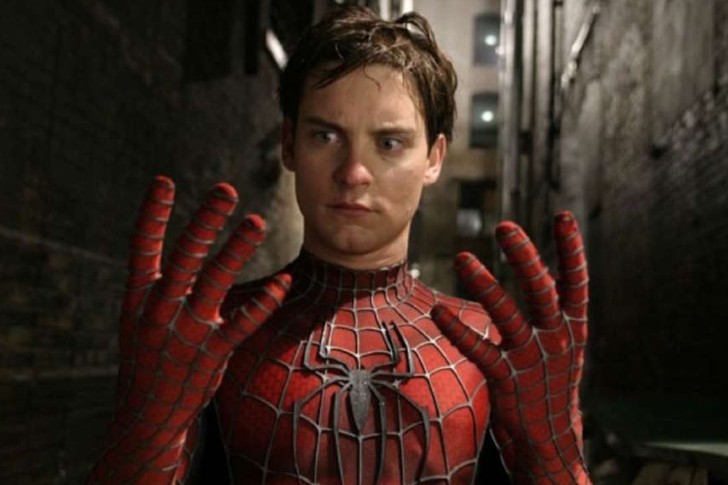
When Spider-Man 2 was first released theatres, many thought of it as one of the best superhero films of all time—even Roger Ebert agrees. Quite the claim, given that such films don’t always get the credit they deserve. It may have been a sequel, but the movie truly shone on its own and has cemented itself in the consciousness of fans worldwide. Many praised, not just the directing, but Tobey Maguire’s performance as well.
The movie perfectly encapsulated Spidey’s struggle with finding the balance between being a superhero and a regular guy. Something that most films in the genre tend to gloss over.
THE ASSASSINATION OF JESSE JAMES BY THE COWARD ROBERT FORD – ANDREW DOMINIK, 2007
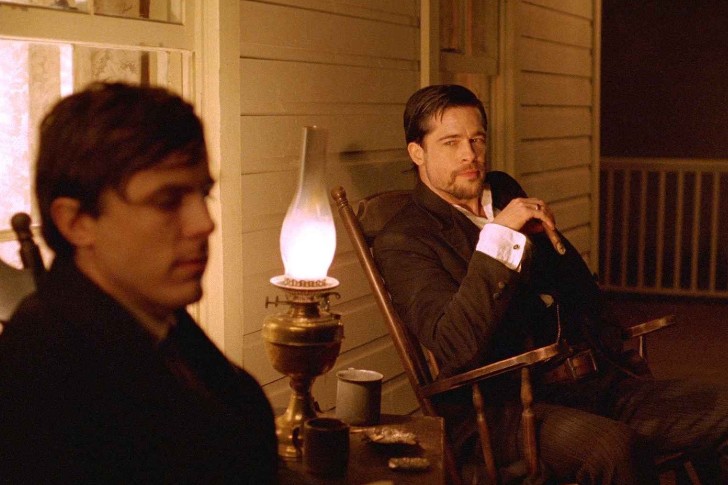
No one can deny the way cinematography influences a movie. The Assassination of Jesse James may not have crazy gunfights that Westerns are known for, but the beautiful setting more than makes up for it. Roger Deakins deserves plenty of credit for making that happen. The cinematographer even went and invented several new lenses for use in the film, creating the oil-painting landscapes that serve as a backdrop for everything that unfolds.
From Brad Pitt and Casey Affleck’s point-blank performances to the haunting soundtrack provided by Nick Cave and Warren Ellis—the movie is bound to linger in the back of your mind after viewing.
HOT FUZZ – EDGAR WRIGHT, 2007
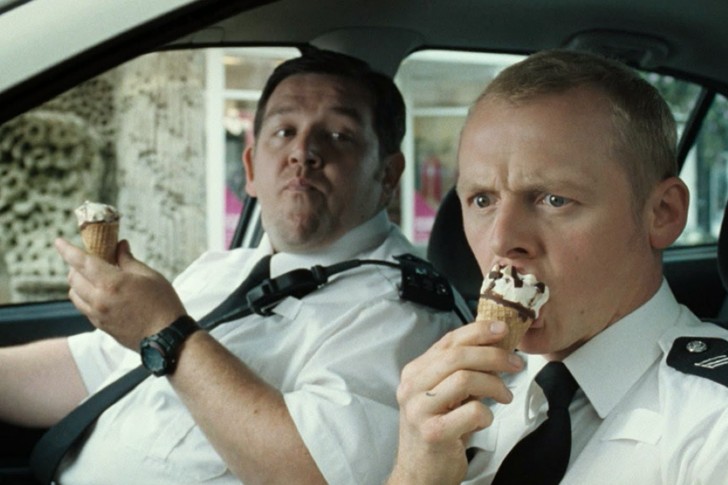
Hot Fuzz was directed by Edgar Wright and co-written with Simon Pegg. Sure, it’s a comedy, but it’s also so much more than that. The credit goes to how brilliantly the screenplay was written—a study in the subtle art of setup and payoffs, without it ending up cliché. Couple that with the comedic talents of Simon Pegg and Nick Frost, and you know you’re bound to have a good time.
From spotting all the different cameos to the thrills delivered by some of the film’s plot twists, you’ll want to watch this one again and again. You’ll likely find something new each time.
THERE WILL BE BLOOD – PAUL THOMAS ANDERSON, 2007
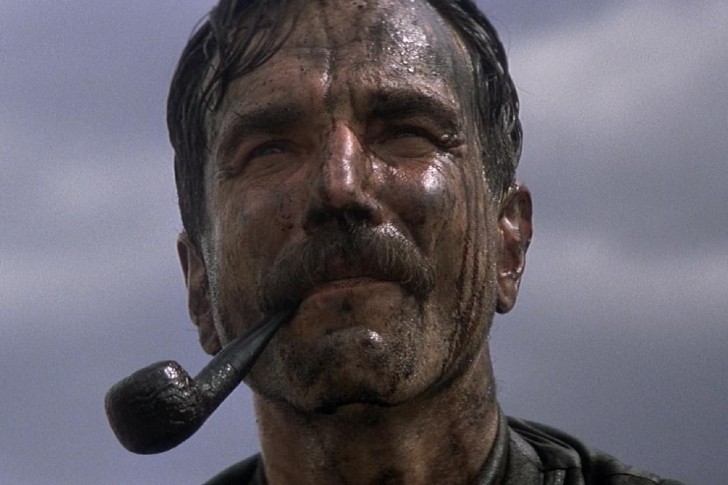
There Will Be Blood may have reached peak popularity by becoming a meme, thanks to the milkshakes, but this film isn’t just a timely tale of capitalist greed—it is also a warning of the consequences that come with it: the bankruptcy of one’s humanity. Daniel Day-Lewis’ performance is not one to be missed either.
The actor always delivers, but something about his turn as Daniel Plainview really gets under your skin. From the brewing intensity in his stares to when it finally bursts out of him—all masterfully captured by director Paul Thomas Anderson. Spoiler alert: the ending will haunt you for days.
JOHN WICK – CHAD STAHELSKI, 2014
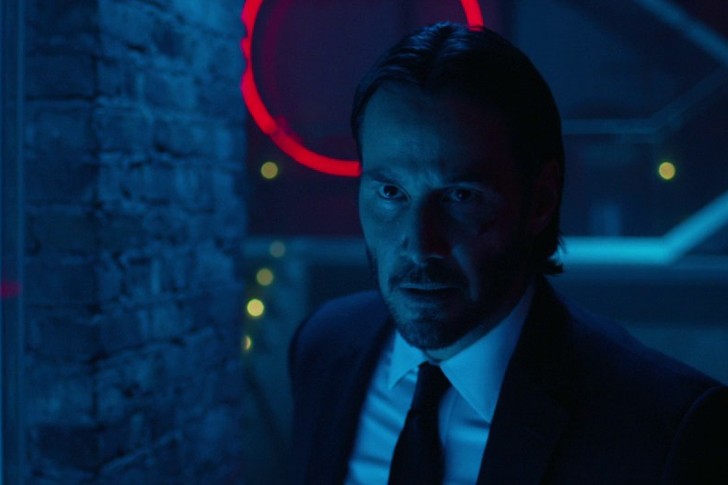
The first thing that comes to mind is its palette of vivid greens, blues, and reds. Think Dario Argento’s Suspiria but with more gunfights. The neo-noir thriller is a feast for the senses—making it hard for you to tear away from the screen. The world Chad Stahelski created is irresistible. An exclusive club of mercenaries, secret societies, and fatal investments all set in a familiar backdrop.
Among the film’s highlights, however, is John Wick himself. Keanu Reeves’ performance as a man in mourning (albeit, a very dangerous one) really makes you root for him—even when he isn’t particularly “clean” himself.
GUARDIANS OF THE GALAXY VOL. 2 – JAMES GUNN, 2017
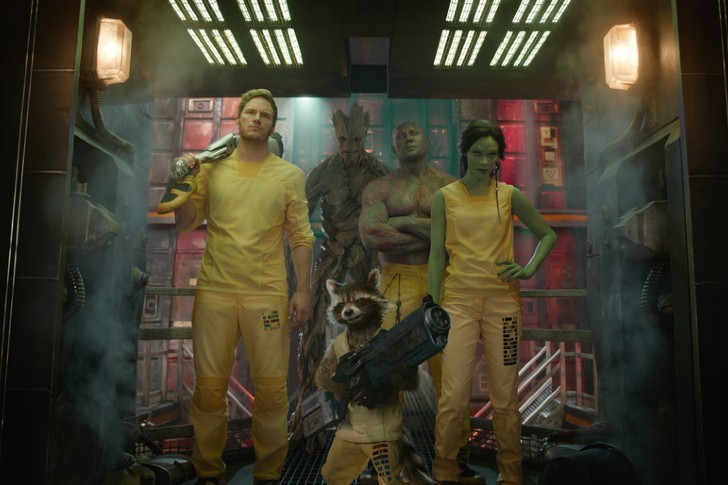
Sequels are often a hit or miss, particularly when it comes to the bigger franchises. With over a decade under their belt, however, the Marvel Cinematic Universe seems to have found a formula to avoid this dreaded curse. Case in point: Guardians of the Galaxy Vol. 2. Where the first one delivered punch after punch, Vol. 2 opted to go for a more emotional impact. And boy, was it impressive.
It focuses on family drama, coping with trauma, finding forgiveness, and learning from the past. The film is an emotional rollercoaster you’ll find yourself applauding for once the credit reel starts rolling.
YOU WERE NEVER REALLY HERE – LYNNE RAMSAY, 2018
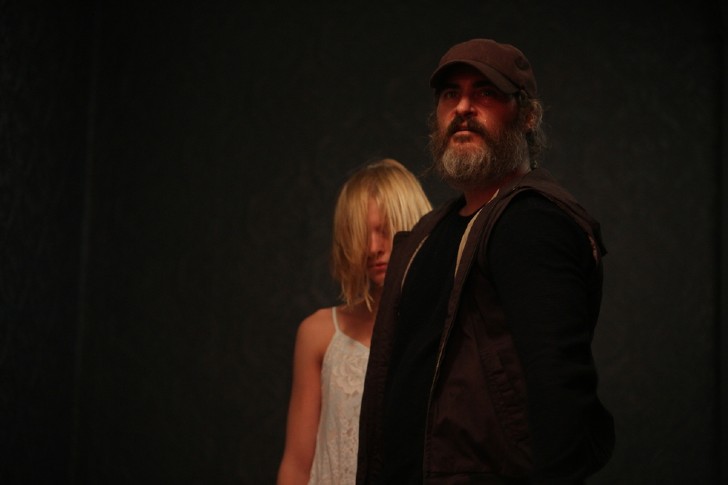
Whilst on the surface, it may seem like your usual violent thriller, You Were Never Really Here will likely throw you for a loop. We’ll hold back on the spoilers, but fair warning: it’ll get under your skin. Lynne Ramsay received much credit for her work on We Need to Talk About Kevin, so imagine what an action-thriller would be like in her hands.
Joaquin Phoenix’s portrayal of a disturbed war veteran who goes on to rescue girls from human traffickers also left us in awe. The movie never goes where you expect it to, but all this darkness isn’t without a sliver of light.
HER – SPIKE JONZE, 2013
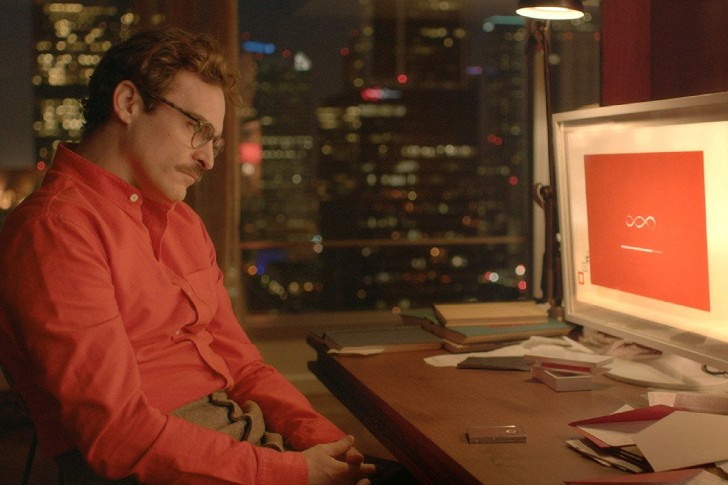
Online dating isn’t a new concept for many, but Spike Jonze’s Her adds an entirely new twist to things. The sci-fi romance follows Theodore Twombly, portrayed by Joaquin Phoenix, a writer who has recently gone through divorce lawyers with his wife. We watch as he searches for ways to combat the weight of loneliness, eventually finding a connection with the new operating system he has purchased. Yes, you read that correctly.
The film’s pastel palette, though beautiful, does little to ease the nagging thought that given how society is now a reality like Theodore’s might not be too far fetched after all.
THE LORD OF THE RINGS: RETURN OF THE KING – PETER JACKSON, 2003
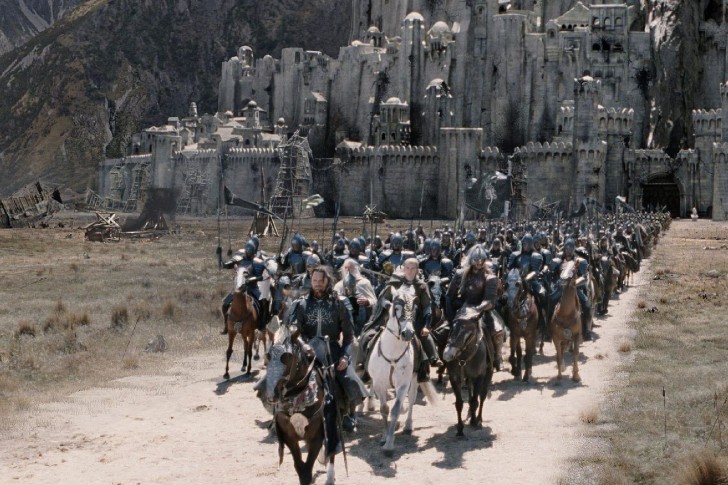
Adapting the Tolkien epic Lord of the Rings for the big screen remains to be one of the greatest and grandest projects in the history of film. Aside from the huge investments needed to make it a reality, the obvious challenge is condensing all of it into a trilogy. From the epic battle scenes to the lush cinematography that had everyone wishing they were in Middle Earth, Peter Jackson’s adaptation was truly a success.
The final installment in the trilogy is also the second highest-grossing film of all time. It took home 11 Oscars and has cemented a place for itself in movie-making history.
THE THING – JOHN CARPENTER, 1982
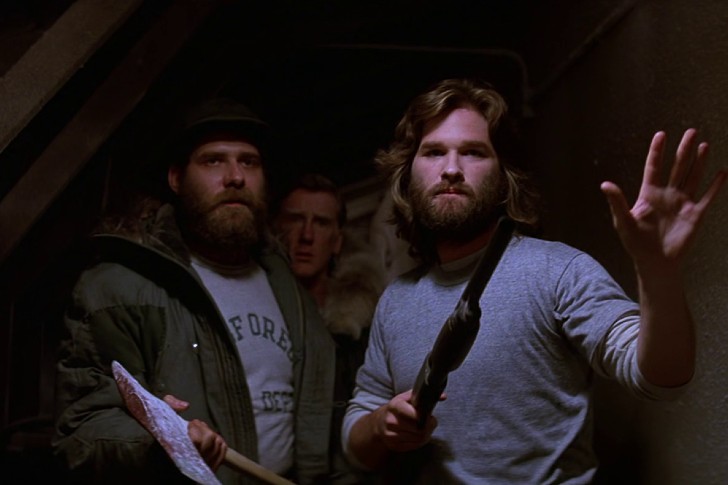
John Carpenter’s The Thing left audiences hanging when the director opted for a degree of ambiguity when it came to its ending, instead of providing straight answers. Questions and people asking for the ending to be explained are just two of the most common search entries, even decades after the film’s release. Theories also abound as to what really happens during its final minutes, making sure that the film won’t be forgotten for a long time.
The Thing proves that despite its dated special effects, nothing beats good old fashioned storytelling when it comes to making effective horror movies.
PULP FICTION – QUENTIN TARANTINO, 1994
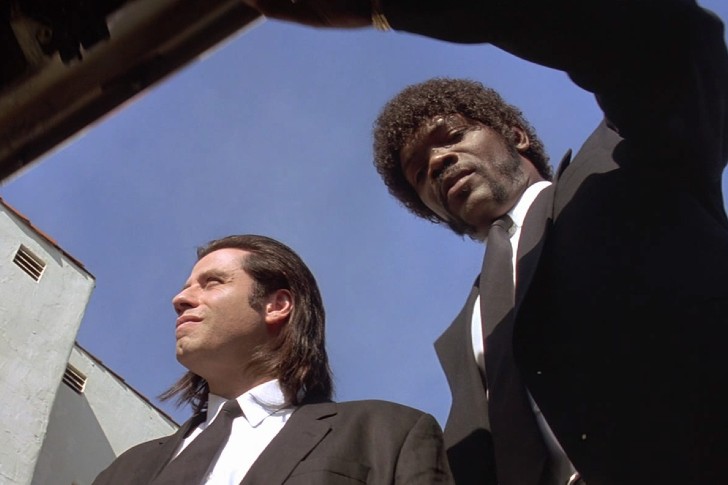
Pulp Fiction is mind-bending in the best way possible. What may seem like a mess of overlapping plotlines eventually comes together and when it does, you’ll know exactly what it means to have your “mind blown”—pun intended. Quentin Tarantino has an innate talent for non-linear storytelling, he’s even made it part of his signature, but one thing that sets this neo-noir masterpiece apart is that it never takes itself too seriously.
The film’s dark themes, the quirky characters, and the iconic soundtrack have certainly left an impression on generations of film fans. Of course, much credit goes to the excellent ensemble cast as well.
2001: A SPACE ODYSSEY – STANLEY KUBRICK, 1968
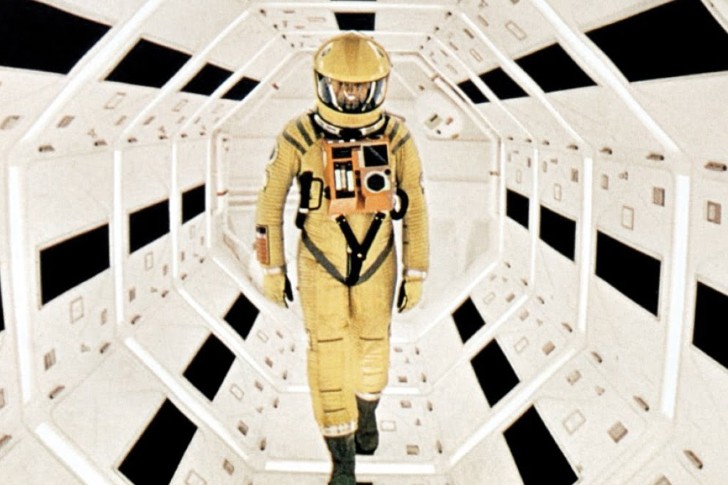
Stanley Kubrick’s 2001: A Space Odyssey remains to be one of the most epic science-fiction films ever produced. It has influenced others in the same genre and is considered a pioneer when it comes to special effects. Its masterful use of dialogue and sound helped create a realistic space-like atmosphere. The screenplay was a collaboration between Kubrick and Arthur C. Clarke, the same author whose short story The Sentinel was the primary inspiration for the movie itself.
Whilst the plot is entrancing by itself, Space Odyssey’s handling of evolution, existentialism, space travel, and artificial intelligence deserves much credit—both for its thoughtfulness and scientific accuracy.
THE BIG LEBOWSKI – THE COEN BROTHERS, 1998
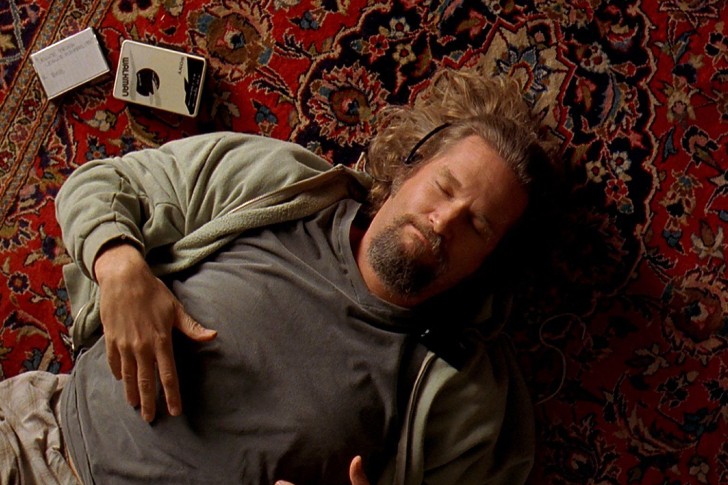
Sometimes, it isn’t the film’s story that keeps audiences glued to the screen. For The Big Lebowski, it’s the eccentric cast of characters that had people clamoring for more. The storyline is entertaining yet a little all over the place. So if you find yourself confused in the middle of watching, you’re not alone. Fans do say that’s part of the movie’s charm as well.
The film follows The Dude, portrayed by Jeff Bridges, who unwittingly gets caught in a very bad case of mistaken identity. The hilarious back and forth between the characters ensures that there’s no bankruptcy of laughter while you’re watching.
PAN’S LABYRINTH – GUILLERMO DEL TORO, 2006
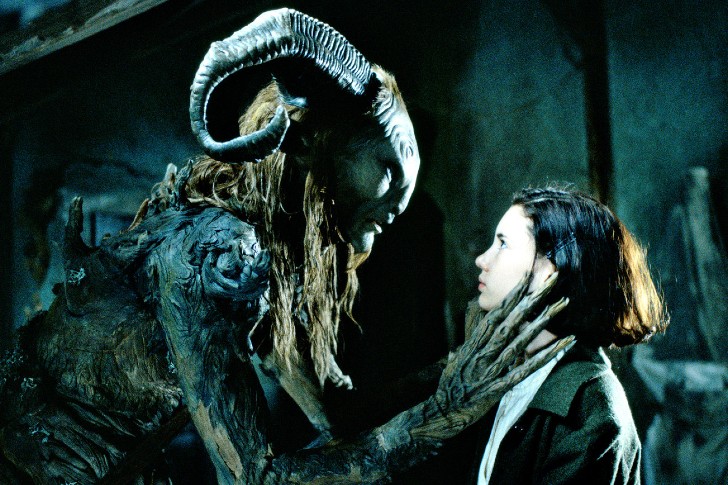
Fantasy movies are certainly not just for children. In Guillermo Del Toro’s dark fantasy Pan’s Labyrinth, history and mythology collide to create this truly unforgettable story. It begins five years after the Spanish Civil War and follows Ofelia’s adventures, as well as the ensemble of magical creatures she meets along the way, towards her true destiny.
The film was highly praised for its storytelling and cinematography, as well as for the actor’s performances. Some might find it emotionally taxing to watch, due to the degree of violence depicted in some scenes, but it remains revered by film lovers the world over.
TITANIC – JAMES CAMERON, 2007
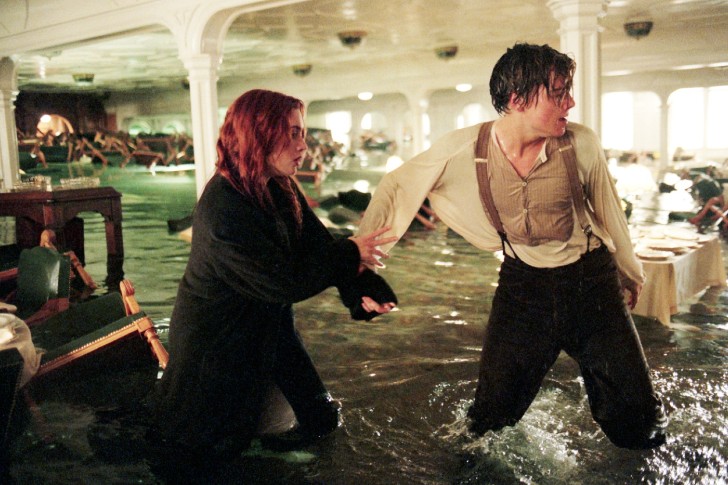
It won 14 Academy Awards and 11 Oscars, but the true mark of Titanic’s accomplishments is how beloved it remains even decades after. It took a great investment to bring James Cameron’s vision to life. The depth of research that went into recreating the ill-fated ship is a mammoth effort in itself and the result is no less impressive. When we say the team behind the film really poured their heart and soul into piecing this masterpiece together, we truly mean it.
From the intricate set design to the costumes, the soundtrack, and the performances from the actors—this film really was close to perfection.
WEST SIDE STORY – ROBERT WISE, 1961
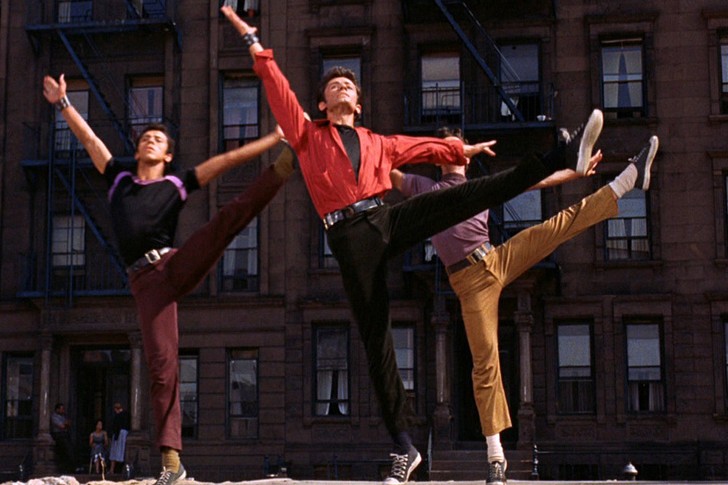
If we’re talking must-see classics, West Side Story is one you shouldn’t miss out on. If there’s one film that did musical adaptations right, it’s this flawless work from director Robert Wise. In fact, it has become so ingrained in pop culture and in the minds of the masses, that it’s been deemed by the United States Library of Congress as “culturally significant”.
A remake is set to be released in December 2020 under the direction of Steven Spielberg, but we have reservations. The original’s entrancing dance sequences will forever remain iconic—with due credit to the film’s dance director, Jerome Robbins.
THE ENGLISH PATIENT – ANTHONY MINGHELLA, 1996
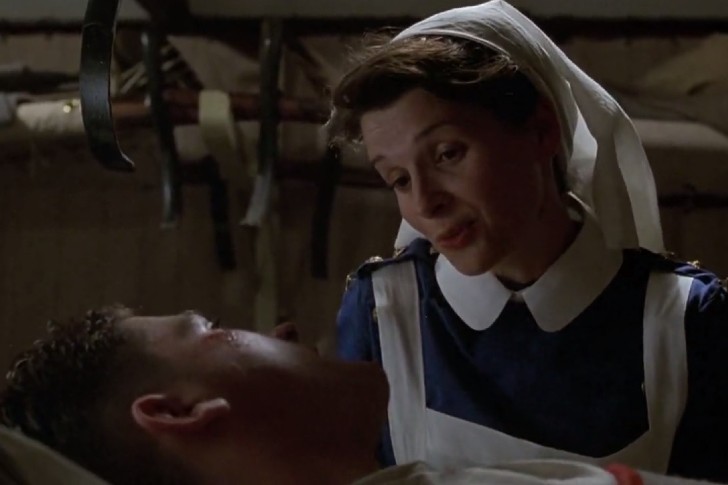
Whilst most war epics focus more on the battlefield action, The English Patient delivers emotional impact by zooming in on the trauma experienced by those who lived through World War II. At the same time, it provides a realistic look at the consequences of war for those who have the good fortune of never experiencing it in their lifetimes.
Directed by Anthony Minghella and based on a novel by Michael Ondaatje, it tells the story of a plane crash victim and a nurse who finds healing through each other. To its credit, the film won 9 Academy Awards and won an Oscar for Best Editing.
SLUMDOG MILLIONAIRE – DANNY BOYLE, 2008
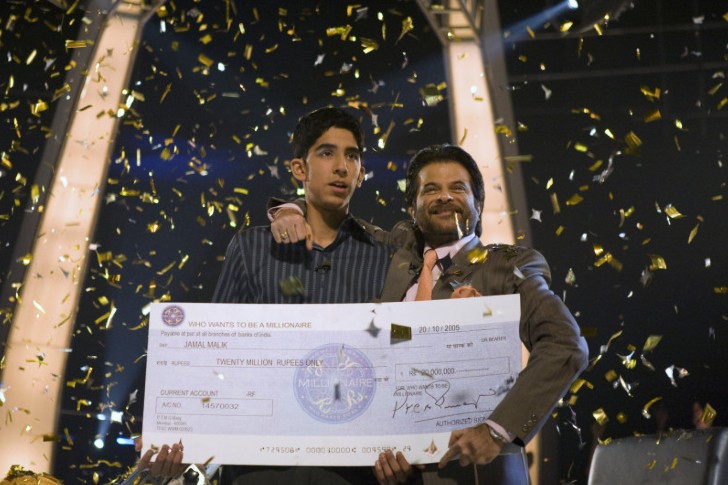
From the slums of Mumbai all the way to Hollywood and the realization that more often than not, we are only one answer away from changing our entire lives. The question is, are you ready to take a chance? Since its release, Slumdog Millionaire has inspired many to start making investments towards their dreams. It’s this feel-good sentiment, coupled with the dazzling visuals and sequences that Bollywood is known and beloved for, that really brings this modern Cinderella story together.
Of course, Dev Patel’s performance as the main protagonist was riveting—you’ll root for him from beginning to the very colorful end.
SCHINDLER’S LIST – STEVEN SPIELBERG, 1993
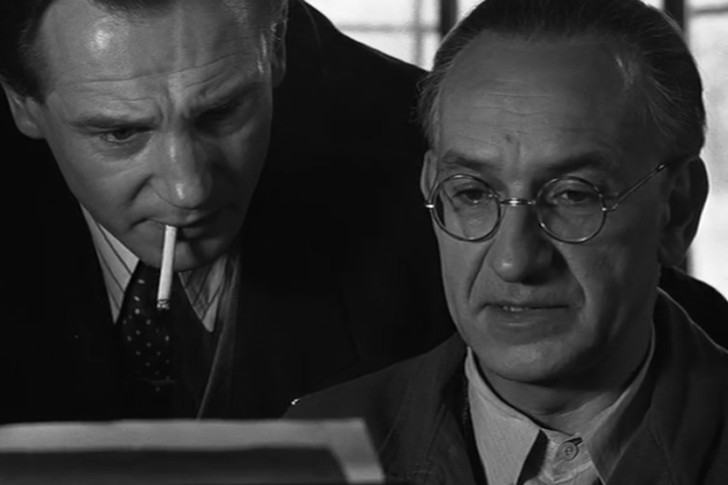
Culturally and historically significant, Schindler’s List gives us a heartbreaking look into how one man was able to keep thousands of Polish-Jewish refugees from meeting a cruel end by hiring them to work in his factory. It’s a film that deserves multiple viewings, especially for those who might be uneducated about the horrors of the Holocaust and how unchecked prejudice can lead to devastating consequences.
We credit the brilliant writing, the masterful use of cinematography, and the film’s haunting musical score; all of these elements combined make Schindler’s List a timeless tale. One that remains relevant, especially in today’s current social climate.
FORREST GUMP – ROBERT ZEMECKIS, 1994
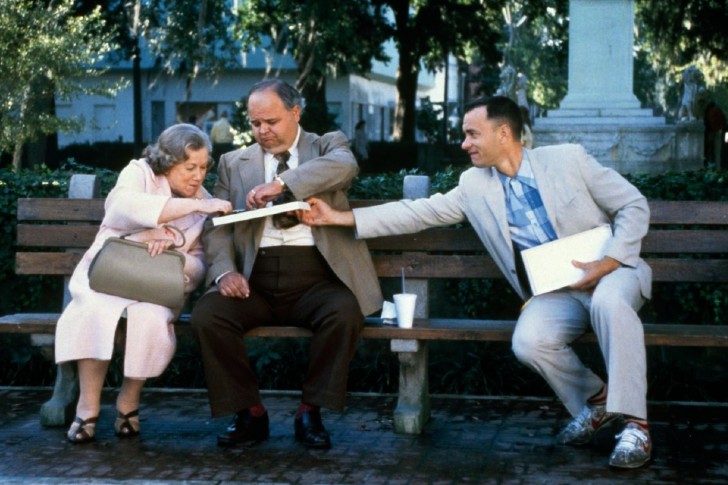
It’s equal parts funny and heartbreaking, two things that make this film truly unforgettable. For us, however, we give much credit to Tom Hanks and his performance in the titular role. The actor really brought Forrest Gump to life, so much so that even years after, it is still one of the characters that are most associated with him. We’re sure he doesn’t mind, though! After all, Forrest taught us many good things—including maintaining a kind-heart, even when the world consistently shows you otherwise.
In 2011, the film was chosen for preservation by the Library of Congress citing it as “culturally, historically, and aesthetically significant”.
THE GODFATHER II – FRANCIS FORD COPPOLA, 1974
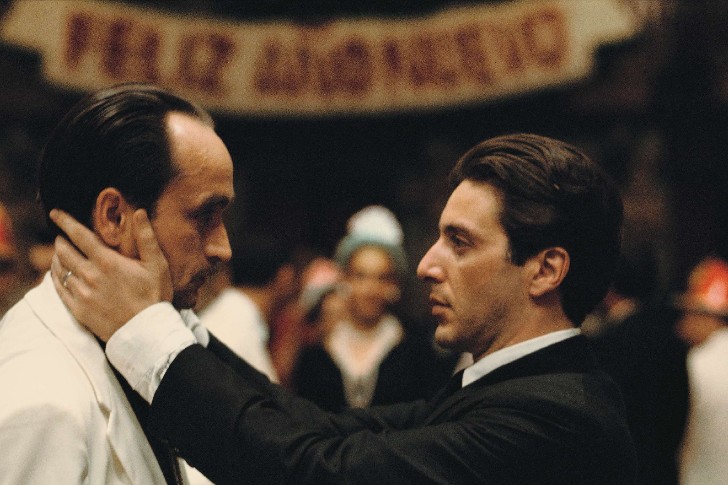
Francis Ford Coppola’s The Godfather was as close to perfection as it can get, so it’s not too surprising that people highly anticipated its sequel. The famed filmmaker didn’t disappoint fortunately and delivered The Godfather II to much acclaim. Of course, some of that credit also goes to the elite ensemble that made up the movie’s cast. This includes heavyweights such as Robert De Niro and Al Pacino.
Like its predecessor, The Godfather II is considered by many to be one of the best mafia films in history. It has also been recognized by the Library of Congress, applauding its dedication to accuracy.
FIGHT CLUB – DAVID FINCHER, 1999
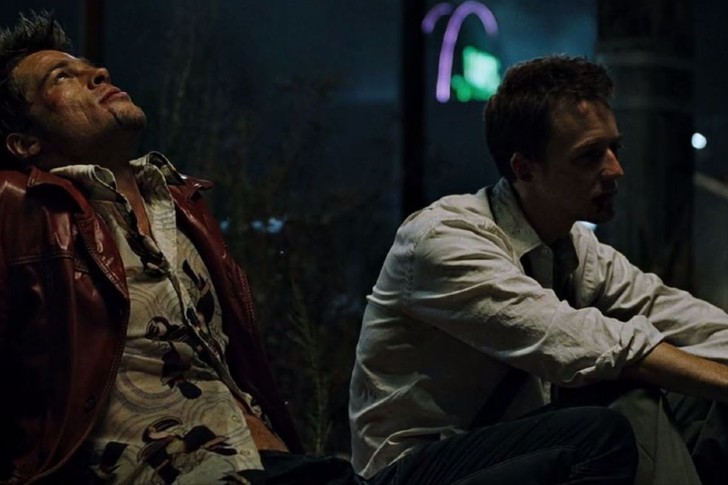
The ‘90s was, arguably, a great decade for film. It was when we met some of this generation’s most beloved directors, including David Fincher. Fight Club follows the story of our unnamed narrator, a white-collar employee who is discontent with his job and only keeps it in order to avoid bankruptcy. Sounds pretty basic, right? Well, not quite.
The film never goes quite where you expect it to be. Coupled with dream-like sequences, uncomfortable scenes, and often graphic portrayals of violence, it weaves a dark tale that’s truly entrancing. So when the plot twist is revealed—you’re simply left mind-blown.
THE INCREDIBLES – BRAD BIRD, 2004
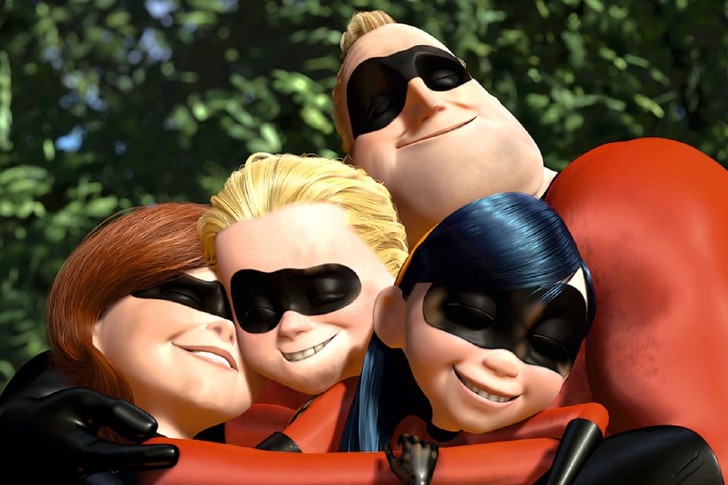
Surprised that there’s an animated film on our list? Don’t be! Aside from the fact that Pixar consistently sets the bar for digital animation, going so far as creating new technology for the film itself, the story itself brought something different to the fore.
Director Brad Bird is the studio’s first outside director and developed The Incredibles as a reflection of all the spy films and 1960s comic books he enjoyed during his boyhood. Aside from receiving much credit from animation fans, it was also praised by critics for changing the way “cartoon” superheroes are viewed while teaching important family values in the process.
WHIPLASH – DAMIEN CHAZELLE, 2014
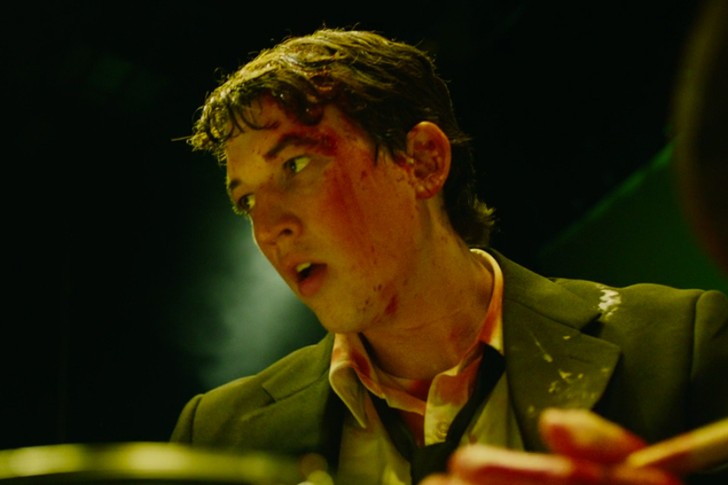
Music can be an integral part of any movie. A great example of this is Damien Chazelle’s 2014 film Whiplash. It follows Miles Teller as an aspiring jazz drummer and focuses on the relationship he develops with the Shaffer Conservatory’s abusive bandleader portrayed by J.K. Simmons. It deals with a lot of heavy subject matter, including the high price that we sometimes must pay in order to achieve our dreams.
Most would be able to relate to the protagonist’s struggles and we credit the cast’s performances for making this happen. Though uncomfortable to watch at times, it’s a must-see for anyone looking for inspiration.
VERTIGO – ALFRED HITCHCOCK, 1958
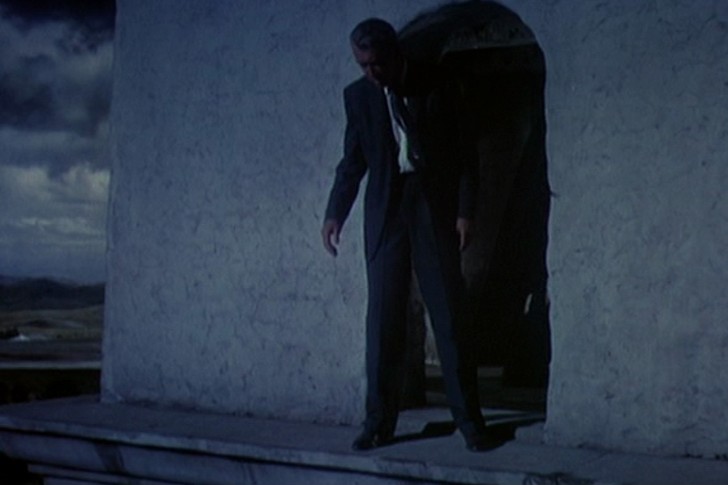
Hope you didn’t think we forgot one of the cinema’s true masters! In true Hitchcock fashion, the movie unfolds slowly, but the suspense never falters. It’s film noir as its finest, which many have tried to replicate but with little success. Vertigo stars James Stewart in the titular role, a retired police officer who has acrophobia—the fear of heights. A fact that’s given further emphasis by Hitchcock’s camera-work that helps viewers really see and feel things from the character’s perspective.
It also gets credit for being a pioneer in the use of dolly zoom, helping create the feeling of disorientation throughout the film.
THE SHAWSHANK REDEMPTION – FRANK DARABONT, 1994
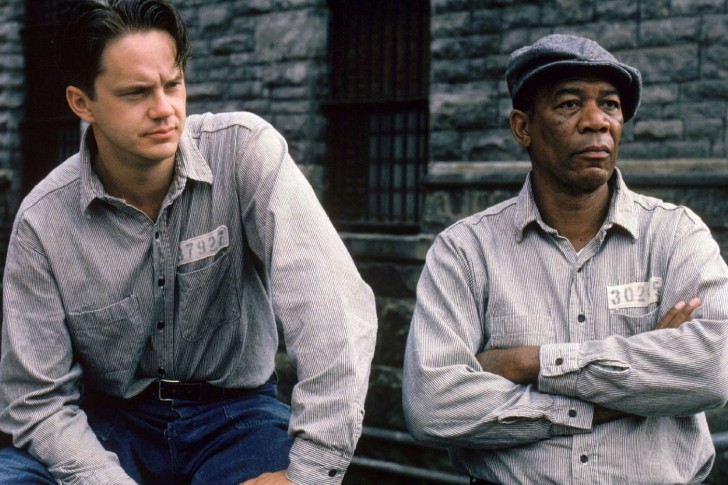
Written and directed by Frank Darabont, The Shawshank Redemption is a heart-wrenching tale that follows one man’s journey from being falsely incarcerated to finding redemption. Whilst that might sound hopeful, there are many scenes in the film that can be difficult to watch for some people. It tackles a number of heavy subjects and issues that tend to be glossed over in other similar dramas. Despite the ultimately dark themes, there are many moments of levity throughout the film.
Resilience, friendship, hope, and moving forward despite one’s dark past; The Shawshank Redemption certainly deserves much credit and recognition for what it has managed to achieve.
ONE FLEW OVER THE CUCKOO’S NEST – MILOS FORMAN, 1975
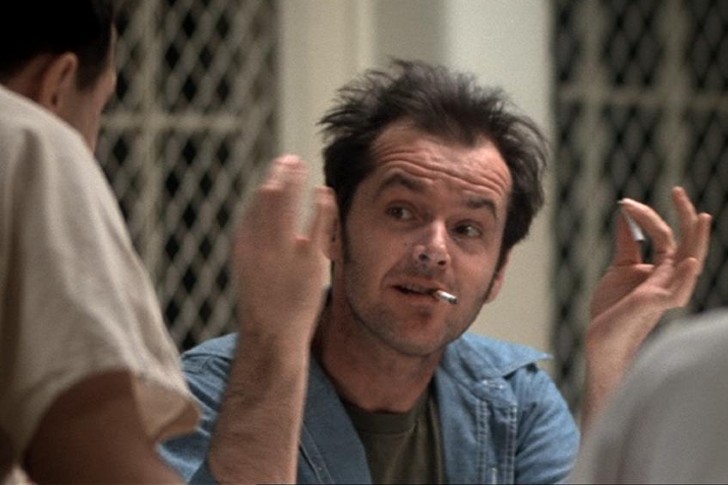
We’ve come to love Jack Nicholson for his ability to deliver uninhibited performances while still maintaining a degree of control. His performances never seek to overshadow the personalities he’s sharing the scene with and instead, amplifies those voices as well. Prime examples of this can be seen in The Shining and in Milos Forman’s One Flew Over the Cuckoo’s Nest.
The film was shot in the Oregon State Hospital, an active mental hospital that was also the setting mentioned in the original novel. Like an itch that seemingly won’t go away, this film will stick to you for years on end.
AMADEUS – MILOS FORMAN, 1984
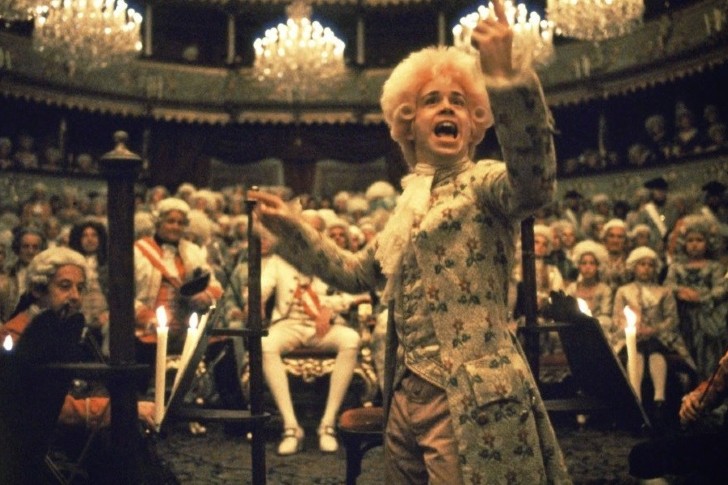
Many think of period films as being slow-paced and boring, however, this isn’t always the case. Milos Forman’s Amadeus is the perfect example of what the genre can deliver if done right. The film chronicles the life of pianist Amadeus Mozart as seen through the eyes of his contemporary and rival, Antonio Salieri.
From the score, the costumes, to the gorgeous cinematography; there’s plenty to love. We have to credit Forman for taking risks as well—shooting the film using only natural light! A level of dedication mirrored by actor Tom Hulce who practiced piano for hours each day to prepare for his role.
THE TRUMAN SHOW – PETER WEIR, 1998
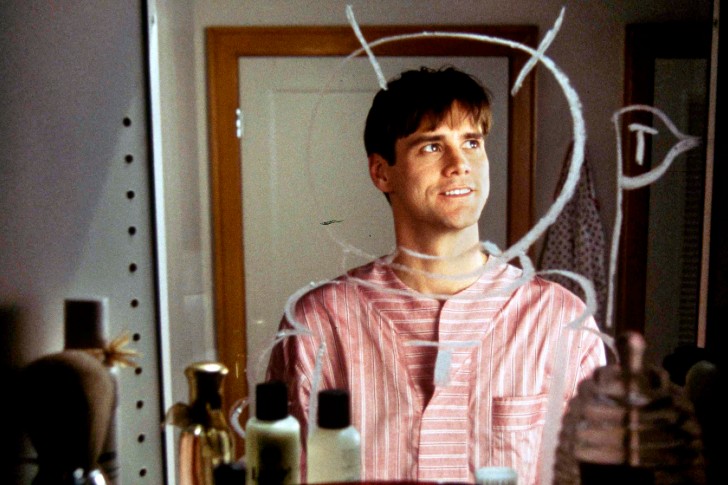
There is something very sinister about The Truman Show hidden behind the perfect picket fences and pastel suburban homes we are presented with. In the film, Truman Burbank, portrayed by the iconic Jim Carrey, is the subject of a very popular 24-hour reality TV show. The twist in Truman’s case is that he is completely unaware.
His entire life, from childbirth, has been nothing but a fabrication. Behind the scenes, Christof, portrayed by Ed Harris, controls everything. There is a happy ending here, fortunately, but it does make you look at reality TV, and what it represents, a degree differently after watching.
SILENCE OF THE LAMBS – JONATHAN DEMME, 1991
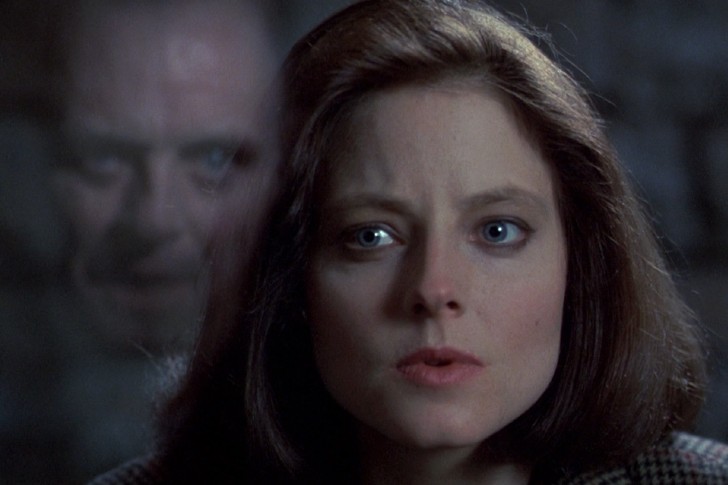
Anthony Hopkins’ portrayal of Hannibal Lecter is the gold standard when it comes to serial killers in film. Based on Thomas Harris’ novel of the same name, it also stars Jodie Foster as Clarice Starling, who goes toe to toe with the brilliant yet deranged Lecter. The mind games between the two leads provide bountiful thrills and the chase for Buffalo Bill will keep you at the edge of your seat.
Silence of the Lambs is a study in subtlety and will haunt you long after the credit reel rolls in. We mean it—the ending might make you reconsider what “dinner” actually means.
LITTLE WOMEN – GRETA GERWIG, 2019
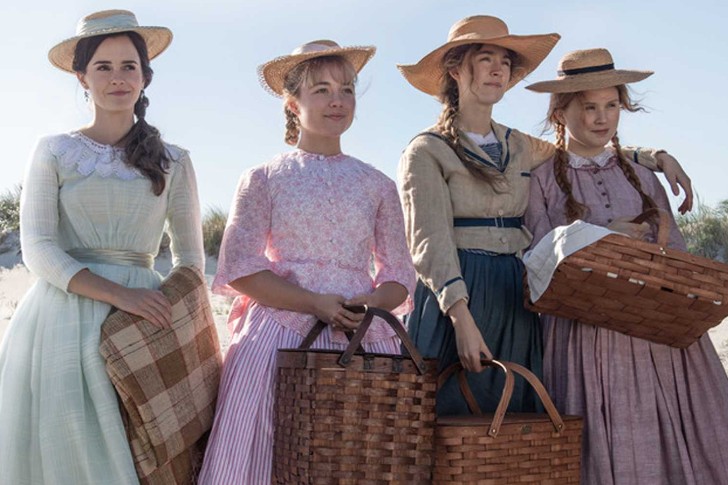
Louisa May Alcott’s Little Women was first published back in 1868, but its themes certainly transcend time. Its seventh film adaptation, written and helmed by Greta Gerwig, stands out for many different reasons. The movie is a product of its time, allowing generations of women, both young and old, to find something relatable.
Aside from the story and the strong performances delivered by its predominantly female cast, there’s also the degree of attention given to the costumes and setting. It’s a period film that’s fit for the times, with the March sisters ready to inspire a new generation of empowered women.
CROUCHING TIGER, HIDDEN DRAGON – ANG LEE, 2000
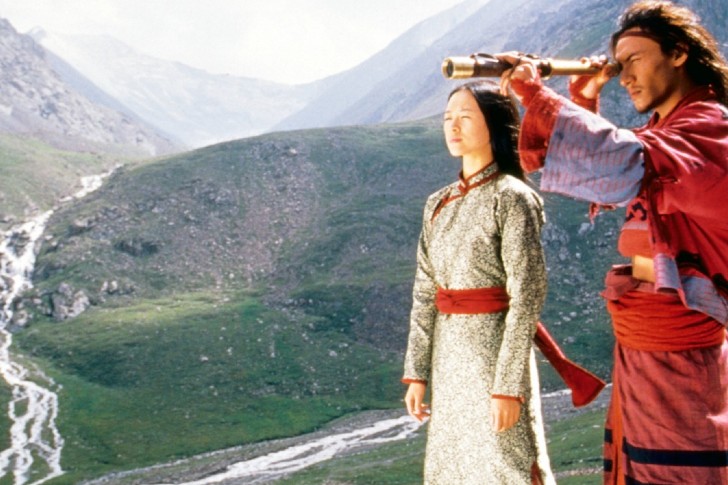
Crouching Tiger, Hidden Dragon has been compared to a painting or a graceful dance, with due credit to its beautifully choreographed fight scenes. Ang Lee’s return to Taiwanese cinema has gifted us with this wuxia masterpiece starring a powerhouse ensemble of actors, including Michelle Yeoh, Chow Yun-Fat, Zhang Ziyi, and Chang Chen.
Set in 18th-century Qing Dynasty China, not only is it a feast for the senses, but it also delivers when it comes to storytelling. The musical score acts like a thread that brings harmoniously weaves every element together. Both thrilling and heartbreaking, this is one film that’ll be difficult to forget.
BACK TO THE FUTURE – ROBERT ZEMECKIS, 1985
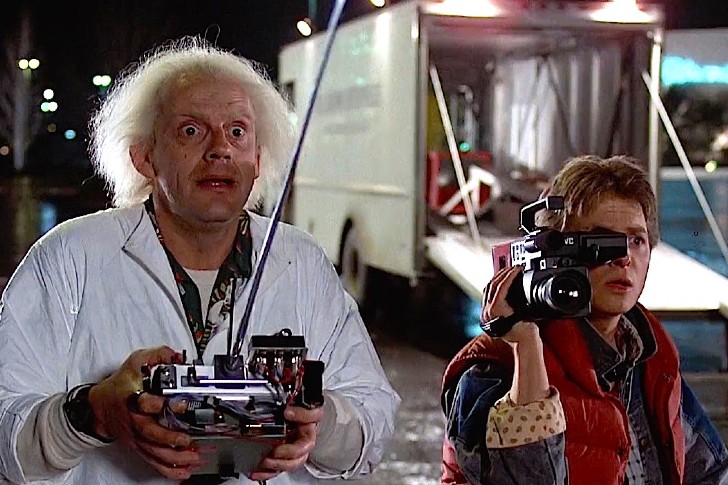
From the past and now, Back to the Future. Even by today’s standard, this iconic piece of cinema remains one of the greatest adventure films of all time. Who can forget Marty McFly and Doc Emmett Brown? The film never lets up when it comes to the comedy, but has plenty of heartwarming moments as well.
The plot might seem convoluted at times, but we’d argue that those twists and turns help draw audiences in even more. Before you know it, you’re already in too deep. Its sequels may have lacked the same punch, but no one can say they were bad investments at all!
MOONLIGHT – BARRY JENKINS, 2016
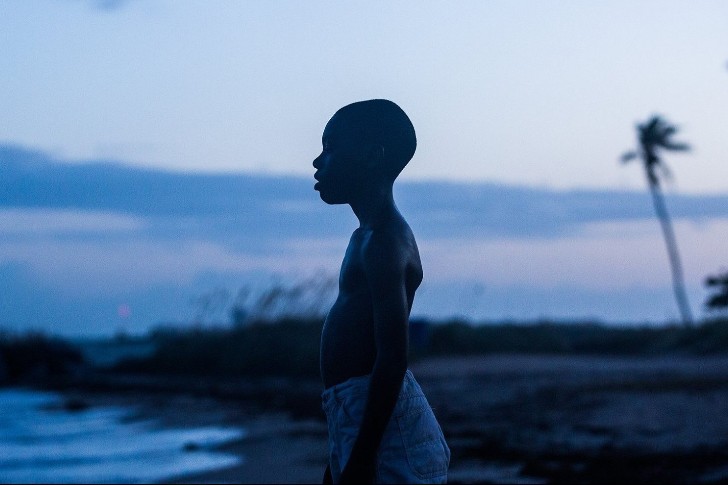
Coming-of-age films are often rose-tinted perspectives on youth, with very few tackling the nitty-gritty of what it’s really like moving from one stage of life to another. Moonlight deserves credit for presenting all of that, without coming across as overly sentimental. The film is divided into three stages, representing the life of our protagonist: youth, adolescence, and early adult life.
It explores his struggles with identity and sexuality, on top of the emotional and physical abuse he went through while growing up. Sure, it didn’t do great in ticket sales, but the impact it has had on the industry is deeply palpable.
THE LION KING – ROGER ALLERS AND ROB MINKOFF, 1994

Let’s face it, not everyone has gotten over Mufasa’s death. Who would have thought that Africa’s Pride Lands would serve as the perfect backdrop for this Shakespearean piece of animated cinema? Every element is delivered flawlessly; from the writing to the animation itself. Few other movies in the same genre can be as emotionally impactful. For that, we have its outstanding musical score to credit as well.
The Lion King live-action remake proves that some things are best left as they are. We’ll take powerful storytelling over realistic animation any given day. The hand-drawn original remains superior and the rest is Hakuna Matata.
A STREETCAR NAMED DESIRE – ELIA KAZAN, 1951
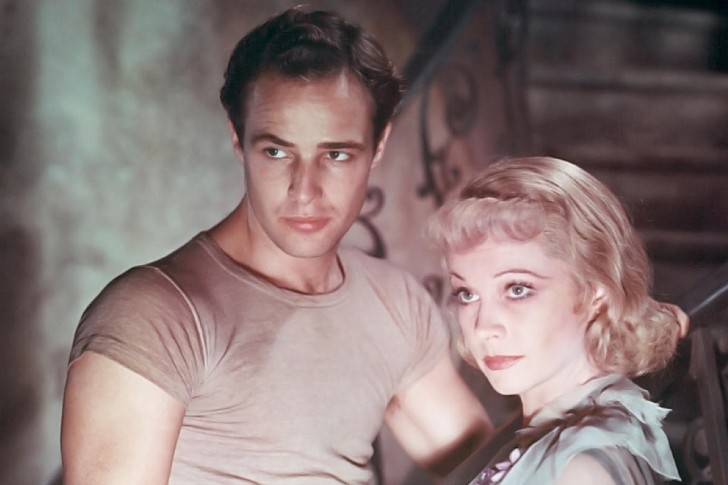
It was a well-renowned play by Tennessee Williams prior to being adapted to the big screen. Starring the most iconic actors of Hollywood’s Golden Era, Vivien Leigh, and Marlon Brando, director Elia Kazan delivered a flawless production that tackled many of the original play’s controversial themes with utmost grace. Though some of the scenes were cut or left ambiguous, it certainly doesn’t take from the story’s overall depth.
The music score also deserves plenty of credit; it helped emphasize the characters’ psychological dynamics, subtly but effectively pushing the plot forward. It has been decades since, but A Streetcar Named Desire remains a masterpiece.
12 YEARS A SLAVE – STEVE MCQUEEN, 2013
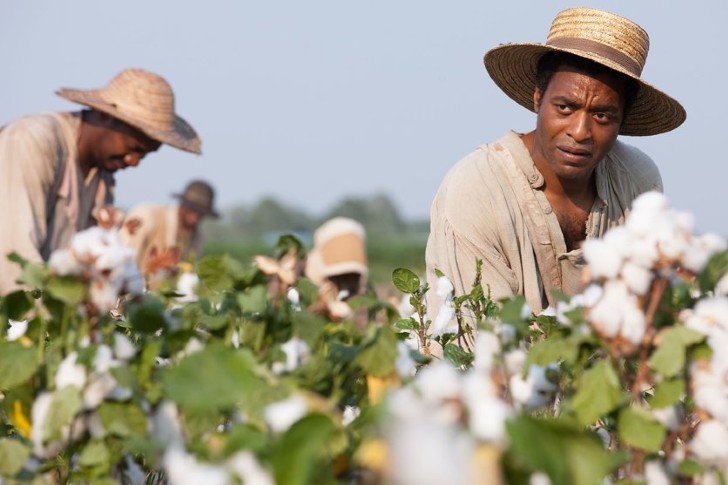
Steve McQueen’s period-drama 12 Years a Slave is an adaptation of Solomon Northup’s 1853 slave memoir of the same title. It follows his story after getting kidnapped by two conmen and eventually sold into slavery. He was made to work on different plantations throughout Louisiana for twelve years, before finally receiving his freedom. The adaptation won numerous accolades, with McQueen receiving recognition for being the first black British director to win an Academy Award for Best Picture.
Cinematographer Sean Bobbitt deserves credit for the breathtaking sequences, which took inspiration from Francisco Goya’s paintings. He created the perfect backdrop for this epic story about human resilience.

